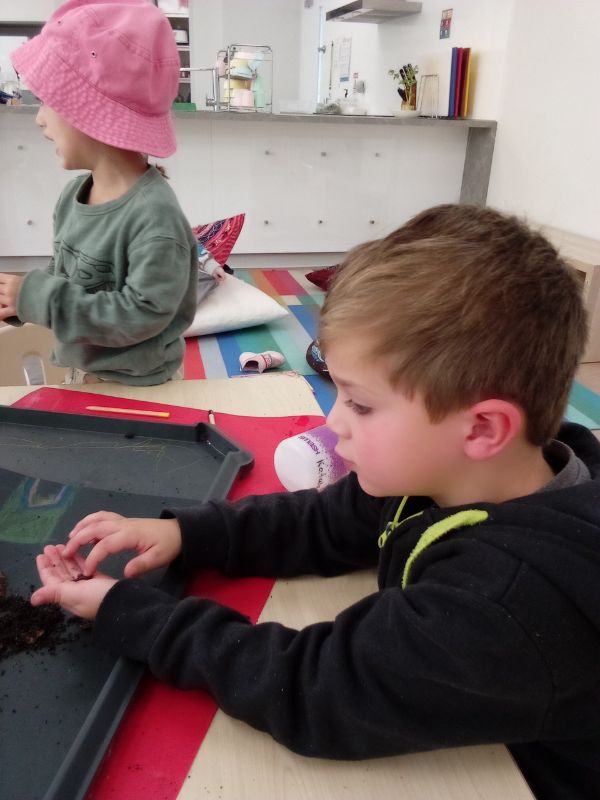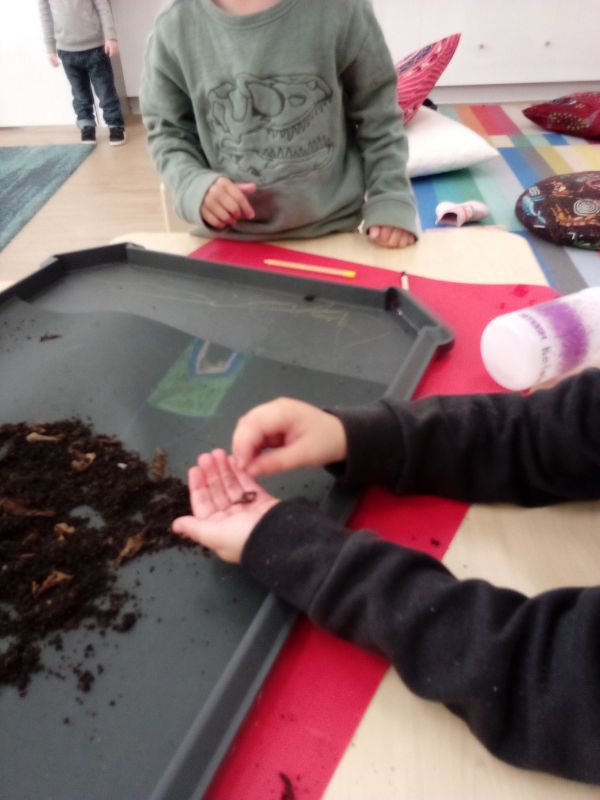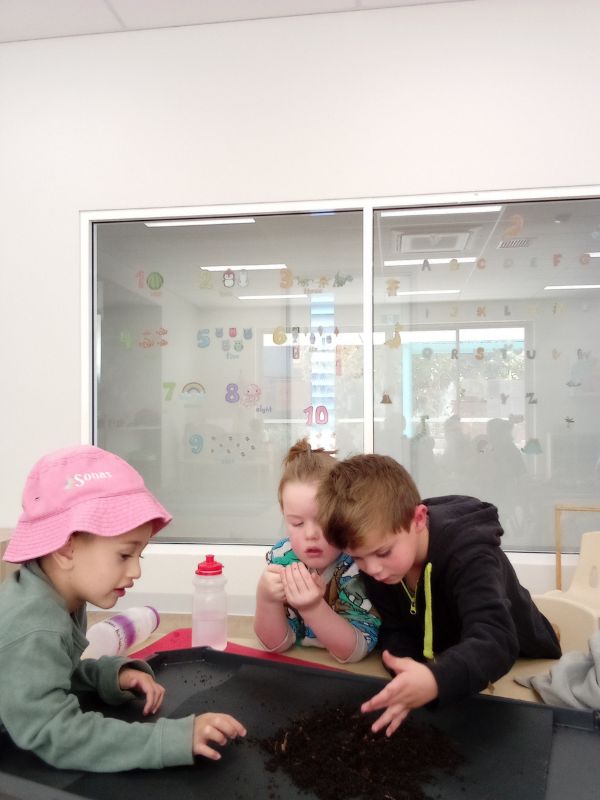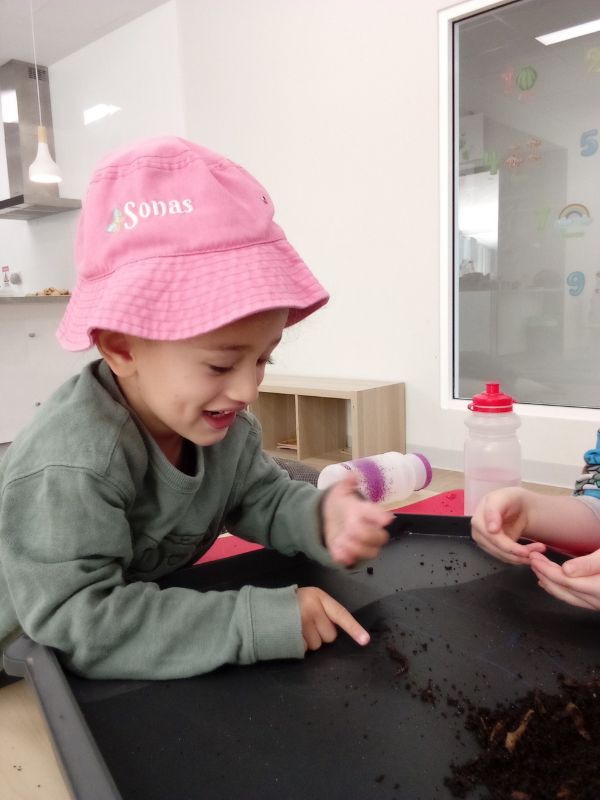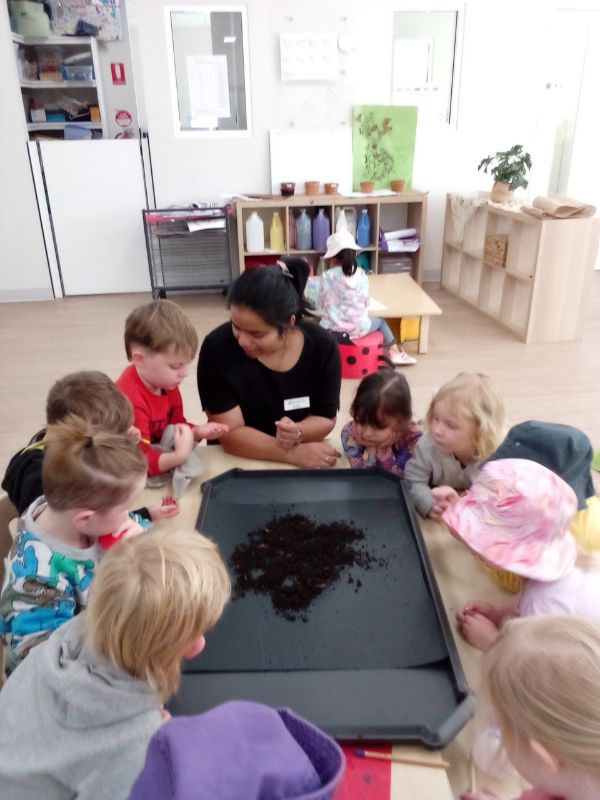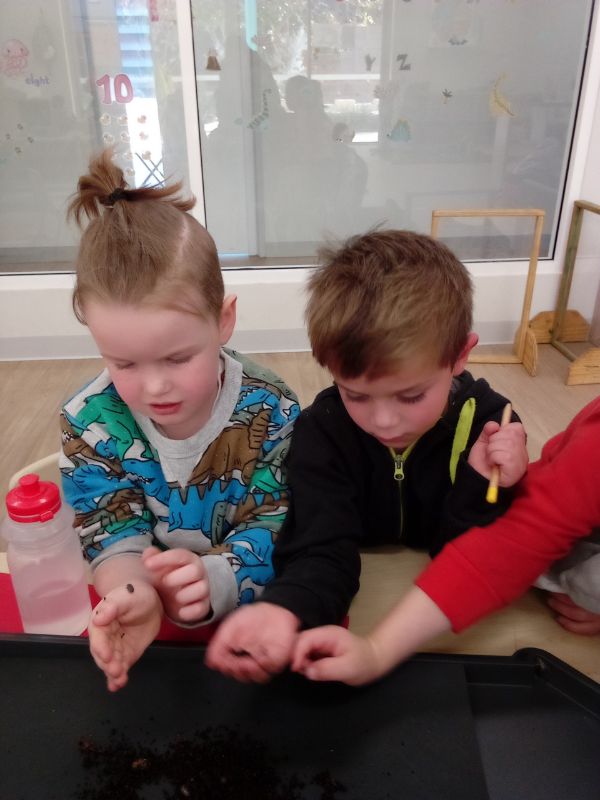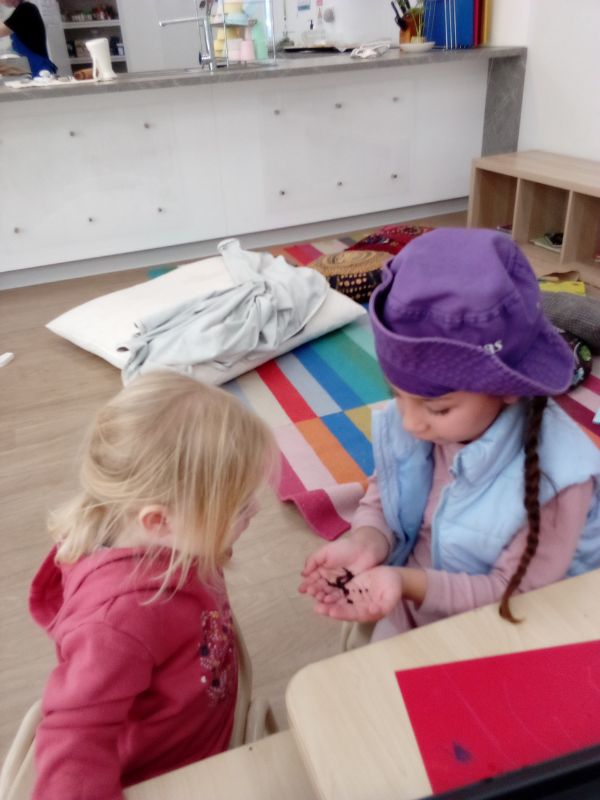They are leaning in closely to watch the worms wriggle in the soil. There are expressions of curiosity and wonder on their faces as they observe the movements of the worms.
Some children tentatively reach out to touch the worms. The introduction of the worm table has clearly sparked a keen interest among the children. It serves as a captivating hands-on learning experience, fostering their natural curiosity about the world around them. Watching them interact with the worms not only promotes sensory exploration but also encourages a sense of respect and empathy towards living creatures.
Analysis: The engagement of children at the worm table highlights several developmental benefits.
Firstly, it supports cognitive development by stimulating their curiosity and encouraging them to ask questions about the worms’ behaviour and habitat.
Secondly, it enhances sensory-motor skills as they manipulate tools and observe the textures and movements of the worms.
Additionally, the social aspect of the activity promotes language development as children communicate their observations and negotiate roles within their groups.

